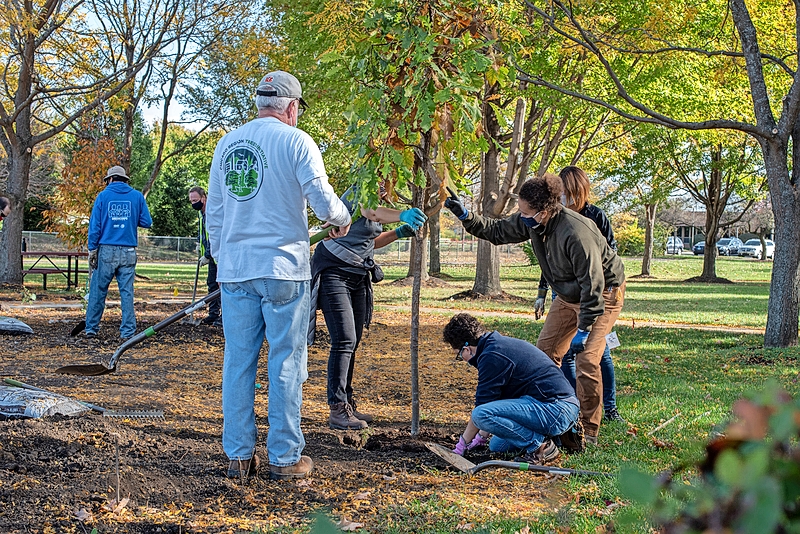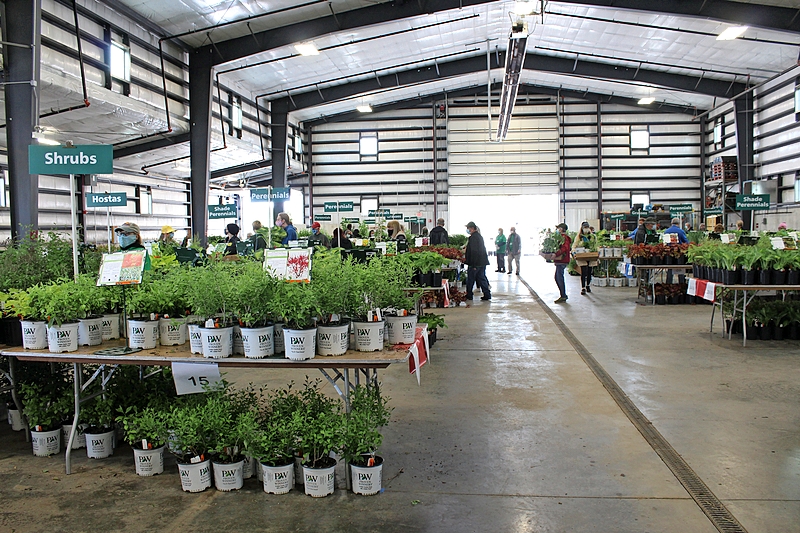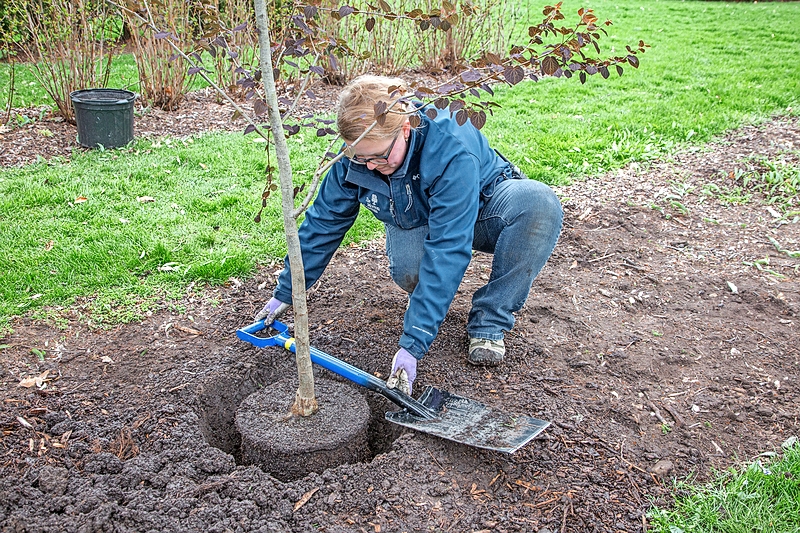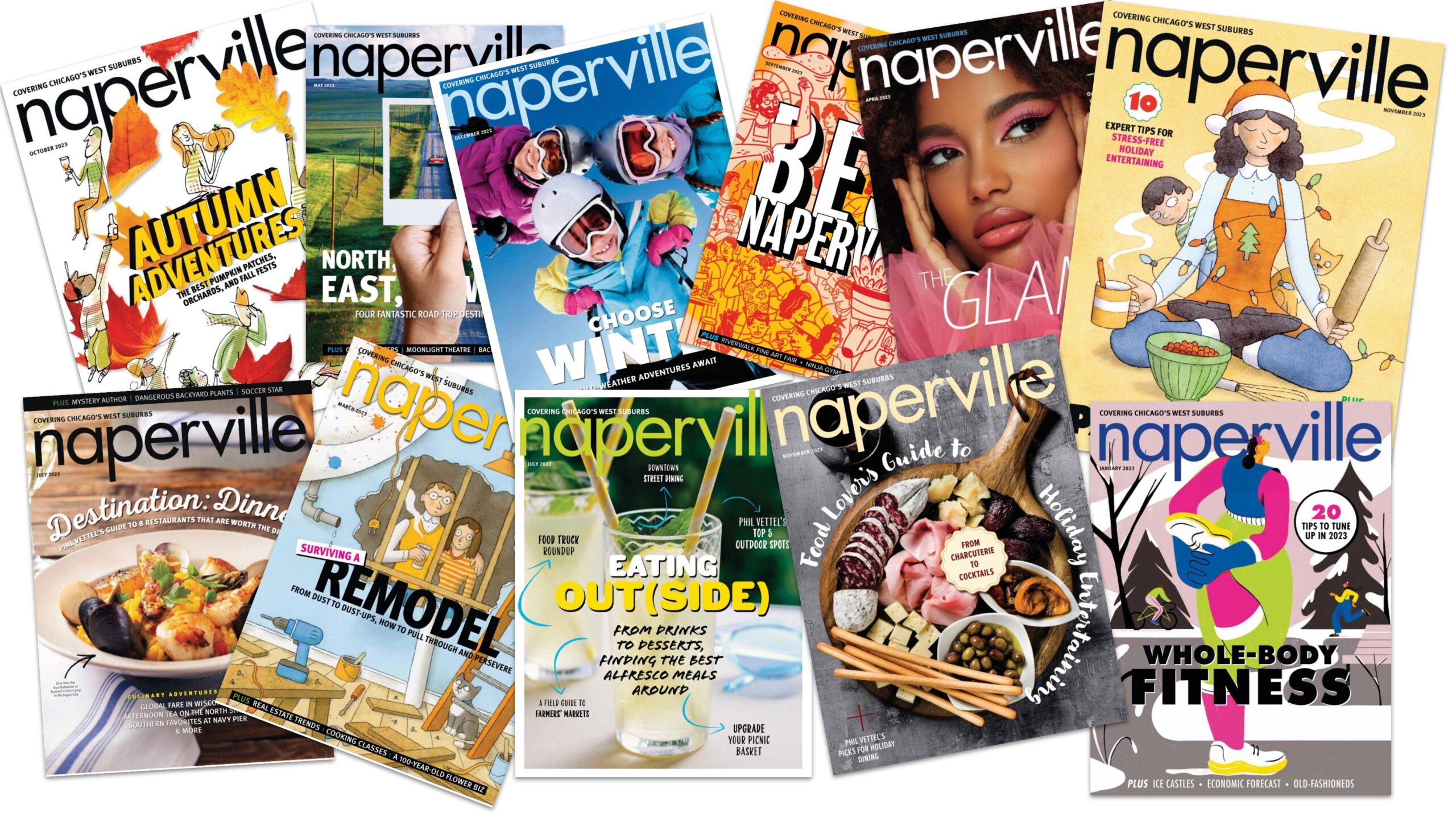Made in the Shade
By Naperville Magazine
Appears in the April 2023 issue.
By Kelli Ra Anderson
Planting trees for the future

We climb them. We sit under their leafy canopies at summer picnics. We festoon them with bird feeders in spring and lights in winter. We’d be lost without trees.
“Every year more studies come out about the benefits of trees,” says Julie Janoski, plant clinic manager at the Morton Arboretum, citing links between tree-lined streets and lower mortality rates, reduced cardiac conditions, and lessened depression. Trees, of course, also help the environment—absorbing carbon-dioxide and air pollutants, cooling asphalt-created heat islands, and providing food and shelter for wildlife.
And, contrary to the old adage, money apparently grows on them, too. Trees can increase home values, decrease energy costs, and even help the local economy. “For visitors to Geneva’s Third Street, when sidewalks are shaded, people slow down and are more likely to linger at merchants’ stores,” says architect Jay Womack, chair of the Geneva’s Natural Resource Committee. “There is an economic benefit.”
This month for Arbor Day and Earth Week, support planting trees with organizations like the Arbor Day Foundation, the Canopy Project, and local groups like the NRC—or just start in your own backyard.

Choosing a Tree
Local nurseries, forest preserves, park districts, and places like the Morton Arboretum offer handy guides for selecting trees that thrive in our climate. Other nuggets to keep in mind:
Diversity. Choose different trees from your neighbors and a variety of trees for your own property to reduce the possibility of widespread blight and infection (remember the havoc wreaked by Dutch elm disease and the emerald ash borer?)
Native plants. Pick regional species that naturally aid our ecosystem (one white oak can support more than 500 kinds of wildlife) and won’t become invasive (looking at you, buckthorn).
Location. Consider the right tree for the right conditions (soil, sunlight, and the proximity to power lines and buildings as it grows).
Seasonality. Think about the tree’s visual impact and practicality in each season. (Will lost autumn leaves affect winter screening? Will the tree flower in the spring? Drop messy berries or catkins on walkways? Remain green for year-round color?)

Planting and Care
Successful planting involves several key components:
Correct planting width and depth. Dig a hole that is two to three times wider than the diameter of the tree’s root ball. Don’t plant too shallow or too deep; soil should just meet the trunk where it widens to the root system.
Unwrap the root ball. Remove as much of the protective cage or burlap as possible so roots can expand.
Amend the soil. Mix in native soil with rich soil to acclimate the tree to local conditions.
Mulch appropriately. Apply mulch two to three inches deep around the trunk but not touching the trunk itself (think doughnut not volcano).
Water regularly. For the first two to three years, water with 10 gallons at least once a week and, when mature, during droughts (to reach the root system, which extend two and a half times the canopy).
If you don’t have a shovel or a green thumb, don’t sweat it. “If somebody doesn’t want to plant their own tree, they can pay the city,” says Patti Girard, project manager with Naperville’s Department of Public Works. Many towns have cost-sharing programs for tree planting.
Native Tree and Plant Sales
• The Arbor Day Foundation
arborday.org
• The Morton Arboretum Arbor Day Plant Sale
mortonarb.org
• uPage Forest Preserve Native Plant Sale
dupageforest.org
• Kane Forest Preserve Foundation Native Plant Sale
kaneforestpreservefoundation.org
• Kane-DuPage Soil & Water Conservation District Tree and Plant Sale
kanedupageswcd.org/kd/tree-plant-sale
• Naperville Arbor Day Tree Sale
naperville.il.us/arbordaytreesale
Photos courtesy of The Morton Arboretum


